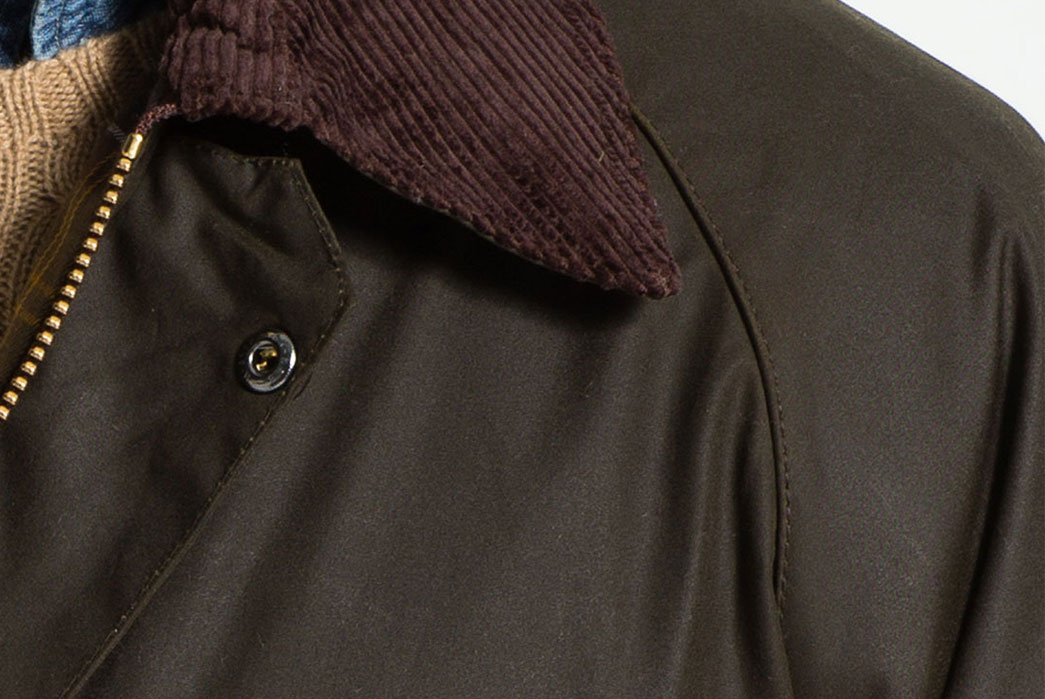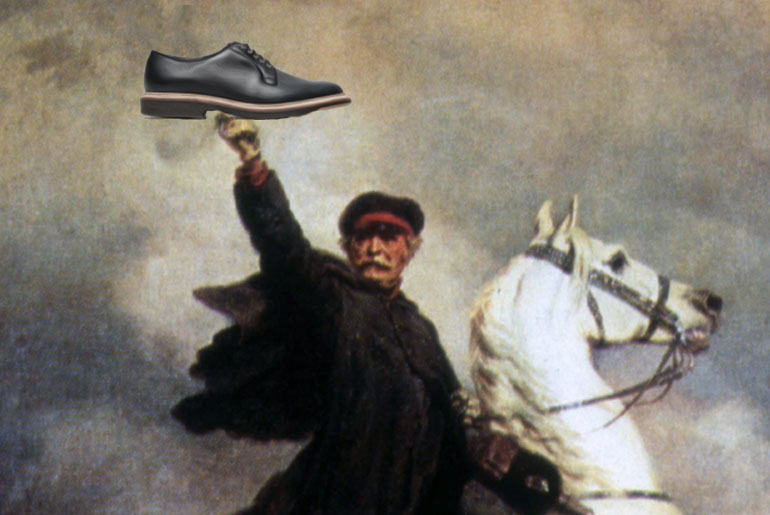- Heddels
- Posts
- July 1 - The History of the Ballcap
July 1 - The History of the Ballcap
In Partnership With
The History of the Ballcap
Our dive into the history of the baseball cap and how it evolved from a mid-19th-century woolen gasket to the iconic accessory it is today.
James Smith

We can look to the cover of Bruce Springsteen’s aptly named 1984 album, ‘Born In The U.S.A’, for an exhibition of ubiquitous American style. A figure in front of a red and white striped backdrop dons a white tee and a pair of washed out Levi’s, but hanging out of the back pocket of these American-blue jeans is something that’s just as iconic—a ballcap.

Image via discogs.
The ballcap stands as the most accessible piece of headwear that can be worn by anyone, anywhere, and what began as a simple piece of sportswear now rests on the heads of half the world’s population. But when did it all begin? And how did the ballcap make the transition from a functional sports cap to the casual crown of the everyman? To answer those questions, we’ve taken a moment to provide you with a brief history of the ballcap.
Baseball Beginnings
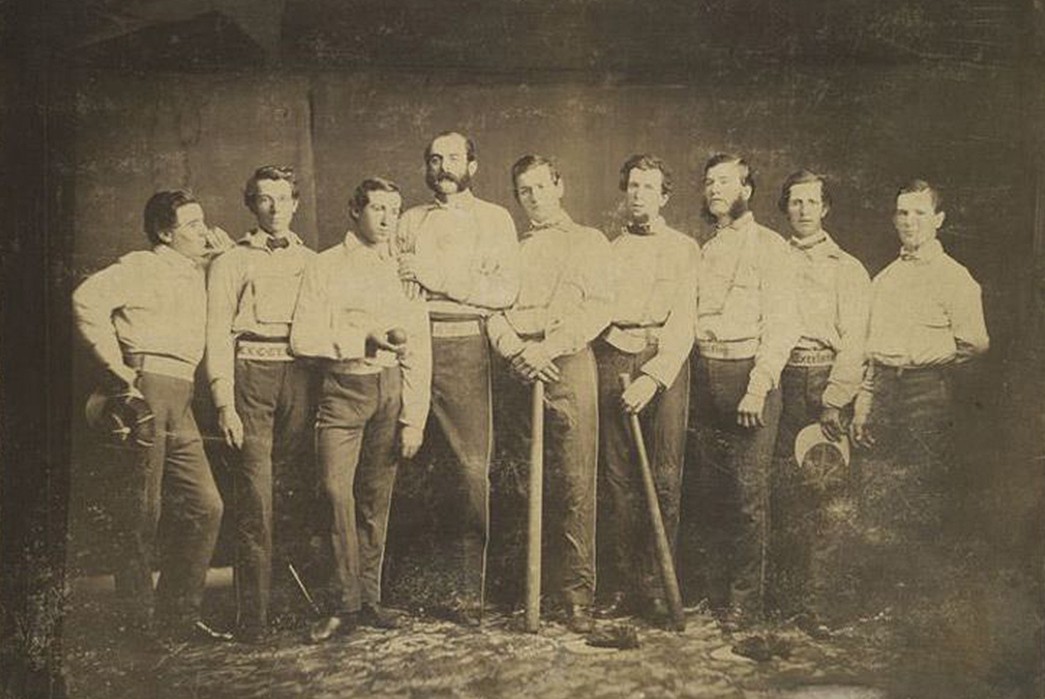
Brooklyn Excelsiors with caps in hand via Pinterest.
The history of the ballcap can be traced right back to the mid-nineteenth century, a time when baseball was rapidly growing in popularity.
In 1849, the New York Knickerbockers sported the first known baseball caps, which were, in fact, made from straw. Highly ineffective and most likely very itchy, the Knickerbockers ditched the straw caps a few years later for a wool cap produced by Peck & Snyder. This new cap — named the “no.1” — featured a flat, panelled crown made from merino wool and a short visor to help shield the players’ eyes from the sun. As baseball continued to grow, this type of cap, pioneered by Peck & Snyder, was adopted across the United States as more teams were organized.
/In Partnership with Meermin/
There are many recipes to cook up a quality belt, but few are as reliable as bridle leather and solid brass. These materials provide durability and age beautifully, all while performing the simple job of holding your pants up.
Whether you’re in need of a new belt or simply want to add a bridle leather piece to your collection, Meermin is offering up this simple yet formidable formula for just $75 with its range of 104137 Belts.
The unlined strap of the 104137 is cut at a versatile 35mm width, allowing it to be paired with pretty much any pants you throw at it. The finished belt comes in a range of sizes to get the perfect fit, so get that tape measure out and pick your color before these things sell out again.
Get yours at Meermin for just $75.

Peack & Snyder Catalog from 1873 (left) via Peck & Snyder/ Library Commons & a 19th Century example of “The No.1” (right) via Worthpoint.
A pivotal moment for the ballcap was in 1860, when an amateur club named the Brooklyn Excelsiors donned a ball cap with a longer brim and a deeper, button-topped crown—two key ingredients of the modern-day ballcap. By 1888, multiple styles of baseball cap were on offer. A catalog in that year by A.G. Spalding & Bros (Spalding) shows 10 styles on offer, as per the image on the left below. These styles were so popular that A.G. Spalding & Bros. acquired Peck & Snyder in 1894.

The A.G. Spalding & Bros 1888 Base Ball Guide shows ten styles of “base ball caps” (left), and early-20th-century A.G Spalding Bros. catalog shows a more refined selection, including the pivotal Brooklyn, New York, Boston, & Philadelphia style caps. Images via Vintage Uniforms & Mark Sobralske on Pinterest respectively.
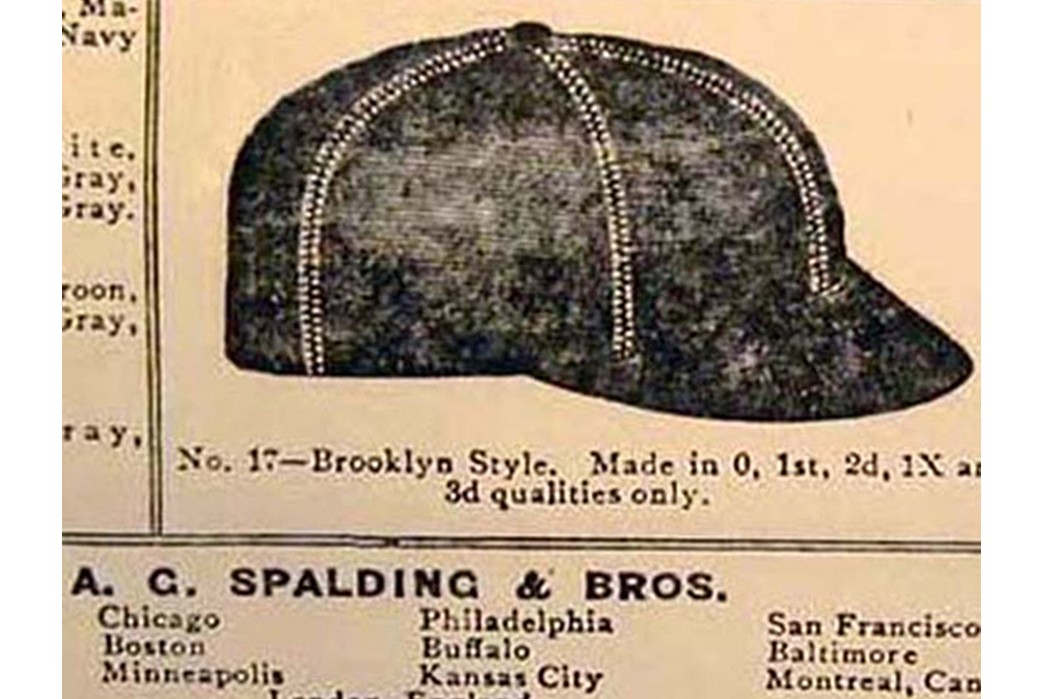
A vintage Spaulding ‘Brooklyn Style’ baseball cap via Strictly Fitteds.
Other styles were introduced over the next 40 years, including the ‘pillbox‘—a ballcap with a horizontally-striped round crown and flat button-top—but it was the ‘Brooklyn Style’ cap introduced by The Excelsiors that would become the norm by 1900, with most major league teams completing their uniforms with this style or something similar.

1894 image of the members Baltimore Orioles with their groundskeeper via Mears Online Auctions, and a team photo showing standard monogrammed caps via PlaqueLady.
Around this time, teams also started using embroidered letters and monograms on their caps. This was started in 1894 by the Boston Baseball Club (now the Atlanta Braves), but more teams followed suit shortly after. In that same year, the Baltimore Orioles arguably became the first team to have a graphic/image-based logo, or dare we say it — branding — by playing a game with orange wings embroidered on the front of their ball caps. This was more of a special occasion for a cup game against the Giants, though — images of the team in that same year feature a striped or monogrammed ball cap (see above), so it wasn’t officially introduced as a standard in their uniform.

1901 Detroit Tigers Uniform via Marc Okkonen/National Baseball Hall of Fame and Wikimedia Commons
In 1901, the Detroit Tigers were the first team to introduce an image-based team logo into their uniform, by way of a red tiger embroidered onto their black ball caps. As you’ll know, this is something steadily grown in popularity as the years rolled by, and now many teams have a mascot or image-based logo.

The Philadelphia style cap, as seen in a Spalding catalog (left) and a physical 1925 example via Keymans Collectibles.
A feature we take for granted in modern-day ball caps is the stitching-reinforced visor. This feature wasn’t introduced until 1903 when Spalding introduced its ‘Philadelphia-style‘ baseball cap. Stitched visors were longer-lasting and held their shape better, and became the norm by 1910, knocking the aforementioned Brooklyn-style off its perch. An 8-panel construction with a short brim, ventilation holes, and a leather headband seemed to be the standard Spalding ballcap shape by the 1920s.

1920s Spalding ‘Philadelphia Style’ Caps via MLBCollectors and Keymans Collectibles
Other hatmakers became popular in the first half of the 20th century, including KM Pro, Tim McAuliffe, MacGregor Goldsmith, American Needle, and Rawlings.
The Modern Day Ballcap
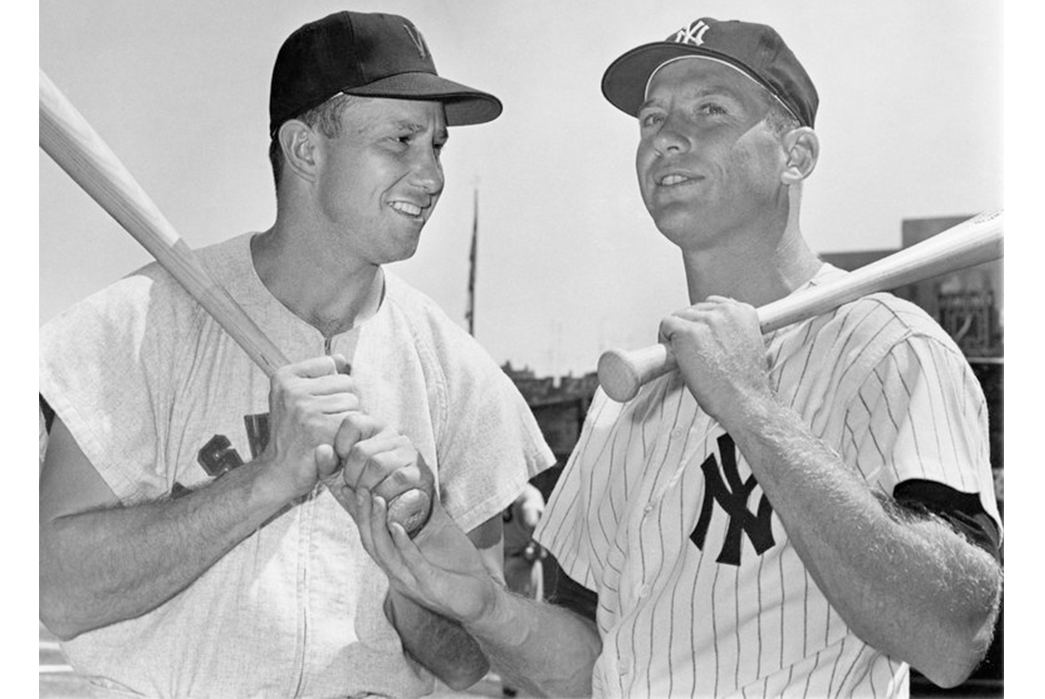
Roy Sievers and Mickey Mantle in 59Fifty ballcaps via NY Times
I bet you were wondering why New Era hadn’t been mentioned yet? Well, here they are. The New Era story started when German immigrant and skilled craftsman Ehrhardt Koch saw a gap in the headwear market. He took a loan from his sister and co-worker in 1920 and founded E Koch Co. with almost instant success, producing around 60,000 Gatsby-style flannel caps in its first year of operation. After the first year, Koch changed the company name to New Era Cap Co.
New Era began supplying the first professional ballcaps to Major League players in 1934. Beginning with the Cleveland Indians, the New York-based company was the first to tailor ballcaps to players’ needs, a service that saw them become the only independent capmaker for Major League baseball teams by the 1950s.

New Era 59Fifty enters the game, via New Era.
In 1954, New Era reworked its fitted baseball caps to introduce the iconic style we know today, the 59Fifty. This new fitted style featured a six-panel crown with ventilating eyelet holes on each panel, a button-top, and a large visor adorned with eight rows of stitching.
During the mid-20th century, New Era also manufactured ballcaps for Wilson, who had contracts with other major baseball teams. New Era ended this practice in the mid-1970s in order to prioritise selling under their own name. By 1994, New Era was the exclusive supplier of baseball caps to all Major League Baseball teams.

Ballcaps in Mainstream Fashion

Tom Selleck in Magnum P.I. via ScreeRant.
The 59Fifty was instantly popular with ballplayers, and spectators soon started buying replica versions to support their teams. Later versions of the 59Fifty featured flexible plastic in the visor, making them easier to reshape to the wearer’s desire, which only helped the 59Fifty’s march into mainstream fashion. By the late 1970s, adverts for New Era caps were being placed in sporting publications.
Some Baseball historians note Tom Selleck as partly responsible for the ballcap-boom, after his character in the 1980s crime drama, Magnum P.I., regularly wore a Detroit Tigers cap in the successful series. The 80s also elevated Hip Hop music to a highly influential place in the cultural movement, and ballcaps were part of many rappers’ uniform.

Spike Lee in his famous red Yankees Cap via The Guardian
But when it comes to ball caps as a symbol of self-expression, no one is more influential than Spike Lee. In 1996, he personally phoned New Era asking them to make a red Yankees fitted to match his red down jacket:
“…it was the 1996 World Series that changed the game. I had a red down jacket that had Yankees written on it in script and I wanted my Yankees cap to match. I called New Era, the official cap of Major League Baseball that the players wear on the field, to see if they could make me one. I wanted the official, official one. Up to that point you could only get the hats in the kit colours – it was not done in Major League Baseball to make any other colourways.” – Spike Lee, speaking to The Guardian in 2019.

Public Enemy’s Chuck D in his famous Pittsburgh Pirates New Era 59Fifty cap via Rollingstone
Spinoffs of the ballcap have also contributed to its ubiquitous status. The ‘snapback’ is a style which features similar construction to a ballcap, but with an adjustable plastic strap at the back of the cap to make for adjustable sizing. Snapbacks are also available in ‘Trucker’ form, on which some of the rear panels are made of mesh to provide greater ventilation.
Buying (Good) Ball Caps
New Era remains the authority in fitted baseball cap-making to this day, also producing snapbacks, low profile, unstructured caps, and many other forms of headwear. They mainly produce in China and Vietnam, but with fair construction standards considering their price point. The iconic 59fifty caps are of notable quality considering how mass-produced they are.
WTAPS x New Era 59Fifty Low Profile / Cap / Poly Twill Navy, available for $109 from HAVEN.
New Era also collaborates with various brands across the fashion universe, from giants like Ralph Lauren to niche streetwear labels like WTAPS and SOPHNET. They even put together some 59Fifty caps for our friends over at Lost & Found. The brand’s presence in those realms is testament to its sovereignty in capmaking.
Lost & Found x New Era Low Profile 59FIFTY Cap, available for $49 from Lost & Found.
POTEN
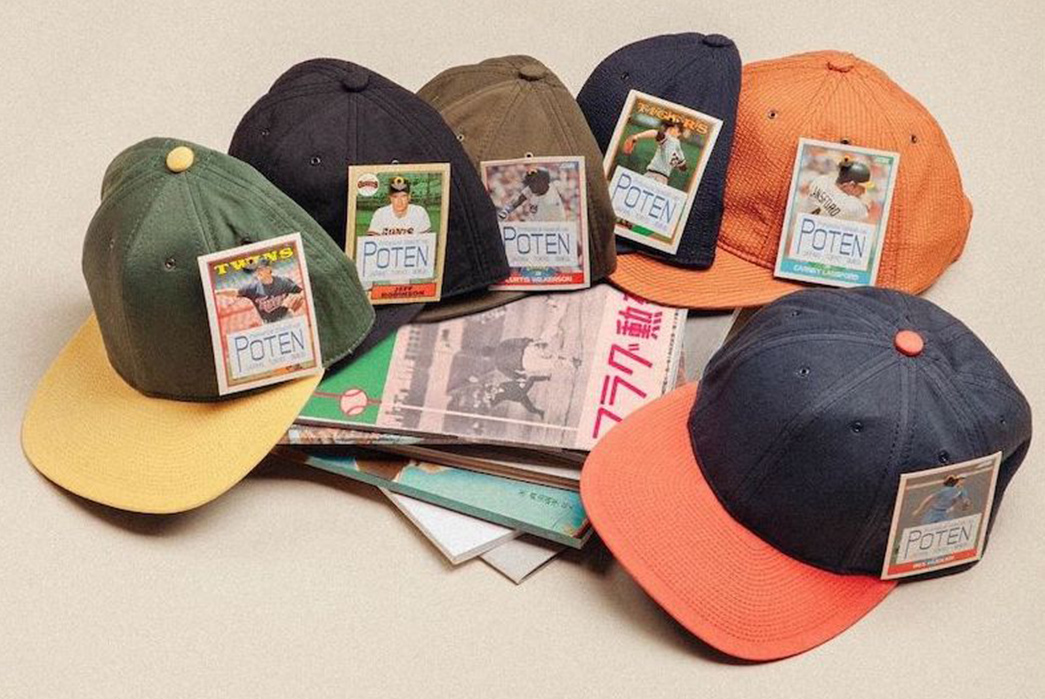
Founded in 2014, POTEN is the brainchild of Iguchi Hironobu, a baseball fanatic and hat-making expert. Hironobu spent 10 years as a designer for a hat company, before establishing POTEN to fulfill his dream of making ballcaps for actual baseball players. Based in Tokyo, POTEN makes arguably the highest quality baseball caps in the land in Okayama prefecture, with designs informed by Hironobu’s taste for vintage American garb and historic baseball culture.
“I wanted to make real baseball caps at a factory that makes hats for professional baseball players, and I saw POTEN as a way to get started.” – Iguchi Hironobu
Each POTEN cap is handmade in Japan and comes fitted with a treated cowhide headband that softens over time, forming to the wearer’s head. The brand produces fitted caps marked with sizes XXS, XS, S, M, and so forth, but also produces adjustable caps with leather and fabric back straps. From our experience with the fitted caps, a size XS roughly equates to a New Era 7 1/4.
Poten Back Satin Ball Cap, available for $140 from Clutch Cafe.
Ebbets Field

Ebbets Field Caps via Ebbets Field
Founded in 1988, Ebbets Field makes garments and accessories inspired by rare vintage flannel uniforms and baseball caps, most notably pre-MLB teams including those from the Negro Leagues and the pre-1958 Pacific Coast League. They make all of their ball caps in the USA or Canada, using high-quality cotton twill and wool flannel to create formidable headwear.
Ebbets Field Birmingham Black Barons Ball Cap, a reproduction of a 1948 article. Available for $125 from DeeCee Style.
Ebbets Field Toronto Maple Leafs Ball Cap, reproduction of a 1939 article, available for $125 from DeeCee Style.
Like this? Read these:
What did you think of today's newsletter? |








